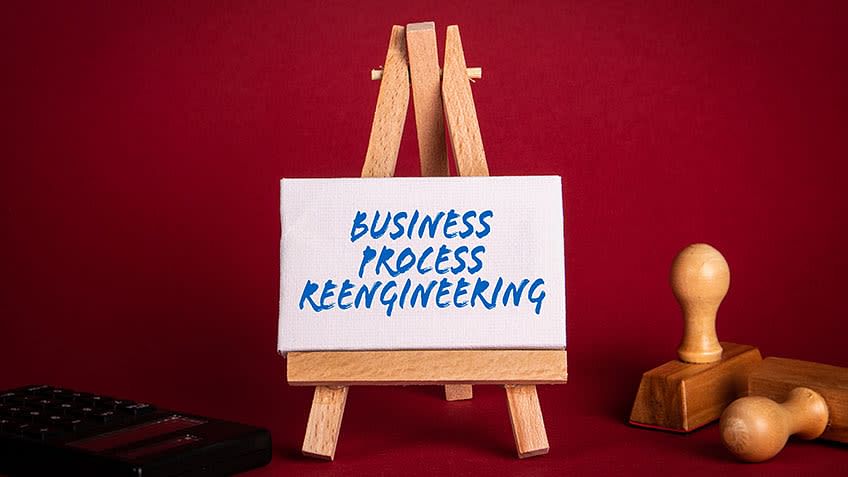Businesses always strive to be their best, increase the associated clients and customers and deliver efficiently. The constant optimization to achieve mentioned goals should not be limited to improvement. Rather it can involve reengineering, which looks at the broad picture of the process being followed. Learn all about Business Process Reengineering in this article.
What is Business Process Re-Engineering (BPR)?
Defined in simple terms, BPR refers to the thorough, disciplined and systematic change in process or method of business. The optimization aims to reduce the redundancy and enterprise cost to enhance quality, productivity and cycle time. Generally, the processes in a company are not well thought out; rather, they are defined by habits or pre-existing techniques. Rethinking and changing the process based on proven research will eliminate unwanted activities, enhancing growth.
Why Do Companies Use Business Process Reengineering?
Irrespective of the business scale, businesses may want to work on the following:
- Clarity of purpose
- Increase efficiency and productivity
- Simplify the operations
- Profit outcomes depending on the current costs
When is Business Process Reengineering Required?
A few points, such as company environment, customer feedback and other factors, indicate the requirement for Business Process Reengineering. Some of them are listed below:
- Decline in profits
- Inability to meet the customer deadline
- Less raw materials in inventory
- Carelessness in following sales leads
- More stress and disputes in the work culture
- Lack of management evident when any member takes leave
- Lack of corporate governance
- Issues with financial statements
Is Business Process Reengineering (BPR) the Same as Business Process Improvement (BPI)?
Business Process Improvement aims to change a few rules or specific functions for optimization, while Business Process Reengineering works broadly to achieve higher productivity. The BPI does not affect the framework.
Business Process Reengineering works on anything that is hindering production and profit. It can change the management method, introduce new frameworks or methods and other acts.
How Does Business Process Reengineering Work?
Business Process Reengineering works through the following steps:
- Use technology to modify the core processes
- Optimize the issues and understand their root cause to eliminate the further possibility of occurrence
- Ensure the company’s ultimate aim is customer needs. Inculcate the same among employees.
- Introduce cross-functionality in teams along with administering responsibility to employees for each task
- Enhance the business processes
5 Steps of Business Process Re-engineering (BPR)
Mentioned below are the steps that help in Business Process Reengineering:
1. Map the current state of your business processes
Understand the framework and methodology presently being followed in the business. Accumulate all the relevant data concerning the same.
2. Analyze them and find any process gaps or disconnects
Look thoroughly into the broad and small picture to realize the problems. Identify any loophole present in the process.
3. Look for improvement opportunities and validate them
Eliminate unnecessary steps. Try to automate the manual process if it is very basic. People can also exchange loads of paperwork with some software to speed up the process.
4. Design a cutting-edge future-state process map
Incorporate any type of change as required. A complete change of framework can also be considered. Assign KPI responsibility to an employee.
5. Implement future state changes and be mindful of dependencies
Explain every change or new framework in detail to each member and stakeholder. Answer their doubt for clarity and ease of following.
Business Process Reengineering Job Roles
Positions at organizations that can practice Business Process Reengineering are as follows:
Team leader
The responsibilities of a team leader include organizing work, delegating tasks, solving problems, managing and many more. Hence, the position allows them to rethink the solutions concerning the lack of productivity and efficiency arising from the process being followed in the organization.
Process owner
They directly deal with the processes, striving to enhance them, solve related problems and optimize them. They can work on all the steps followed by the business and re-engineer them.
Reengineering team
The reengineering team holds the right mindset and ability to take risks. Incorporating a new action method requires time to follow, and results may or may not be satisfactory. Hence, reengineering involves risk. However, designing the right process and teaching each detail prevents such chances.
Steering committee
Steering committees are indirectly involved in the project. Their action involves monitoring the project quality, providing advice and direction, stating the project outcomes and other similar actions. Being deeply associated with the project, they can provide logical aspects to be considered while reengineering the process.
What are the Pros and Cons of Business Process Reengineering?
Business Process Reengineering involves both pros and cons. Let's explore both sides.
Pros
- It focuses on customer needs, thus improving the business.
- It incorporates cross-functionality, thus pacing the process.
- Reduces issues and time taking procedures to a simpler form
- Removes unnecessary activities or replaces them with automation
- Incorporates strategic perspective
- Focuses on improvement and efficiency
Cons
- Depends on various factors and hence may not be applicable to all the businesses
- Requires time for optimization
- May improve one department while depriving another one
- Difficult to follow a re-engineered process
- Highly depends on automation
Gain expertise in the latest Business analytics tools and techniques with the Business Analyst Master's Program. Enroll now!
Conclusion
Business Process Reengineering is a highly thought of approach to help businesses grow and be efficient. Focussing on customer needs is a beneficial process requiring an expert panel to work on it. Complete change of the process requires additional elements to implement, and the business must be ready for the same when planning to reengineer the business process.
Learn more about business process with our PGP Business Analysis program in collaboration with Purdue University. learn how to tackle complex business problems using in-demand tools. Make the most of this business analysis course with Masterclasses from IBM, and Purdue University. Sign-up Today!

